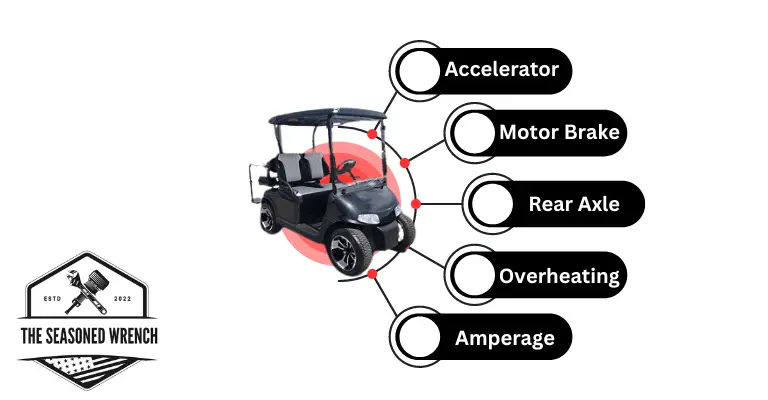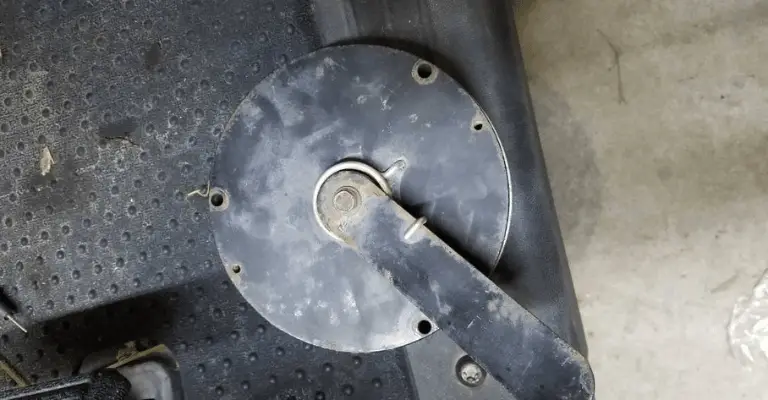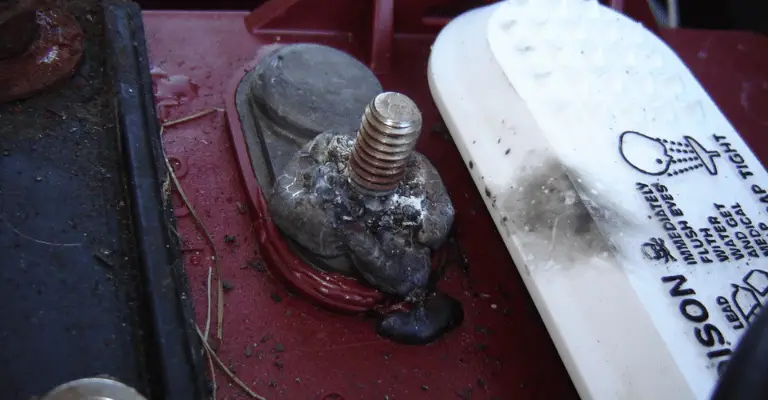
Navigating the world of electric golf carts can be as challenging as mastering the perfect swing.
In the spotlight today is the EZGO RXV, a popular choice among golf enthusiasts but not without its fair share of challenges.
This comprehensive guide dives deep into common EZGO RXV problems and their definitive fixes. Like a trusted caddy, I’ll guide you through troubleshooting, maintenance tips, and solutions to keep your green companion running smoothly. Whether your EZGO is refusing to charge, lagging in speed, or giving you a bumpy ride, we’ve got you covered.
So strap in, as we tee off into the nitty-gritty of keeping your EZGO RXV in top form.
The Dreaded EZGO RXV Problems Troubleshooting Guide
Keep in mind that the RXV was made in both electric and gas variations. This guide covers both iterations, but without explicitly differentiating. This means, if I refer to checking the fuel or a related component it’s intended for the gas variation. If I’m talking about the battery pack, then you can bet it’s electric. Let’s get rolling!
Accelerator Problems
Accelerator problems can manifest as rough starts, sudden stops, or poor acceleration. These issues can result from:
- Loose connections
- Blockage under the pedal
- Faulty pedals
- Fuel leakage
- Defective potentiometer or controller
- Bad spark plugs
Diagnostics & How To Fix Accelerator Problems
If the pedal feels hard when pressing, it’s time for inspection. Start by cleaning the area around the pedal, removing any debris and fixing manageable faults.
Next, inspect the fuel system to check for sufficient gas supply and any leaks. Fill the tank if it’s empty and address leaks via repairs or replacements.
For electric models, begin from the spark plugs due to their accessibility. Replace worn-out plugs or those that have served for over a year with high-quality ones.
Check the wires and fix any loose ones. The state of the controller and potentiometer should be checked too. These parts may require professional handling due to their complexity.

Motor Brake Problems
Brake problems manifest as stiff pedals, grinding noises, or delayed braking. This is a critical issue that should be addressed promptly to avoid accidents. Causes of brake failure in the EZ GO RXV carts include:
- Incorrect pedal adjustment
- Corrosion on brake pivots
- Faulty brake pedal wiring
- Excess voltage
- brake locking up
Diagnostics & How To Fix Motor Brake Problems
If you have some mechanical knowledge, you can check the state of the pedals. They may be stiff due to debris or damaged support parts. Clear the debris, fix the pedal assembly, and adjust it correctly.
Lubricate the brake pedal and ensure the wiring is in good shape by fixing it where necessary. Replace worn-out brake pads with new ones or have them polished by an experienced mechanic. Lastly, replace any corroded brake components.
Also, I recommend removing the motor brake to examine (and smell) it for any burning smells, black soot, or otherwise abnormalities because EZ-GO RXV motor brake problems are more common than white on rice.
Rear Axle Problems
Rear axle problems are often overlooked but can cause significant issues. This problem often manifests as the cart veering to one side or unusual noise when the cart is in motion. Causes of rear axle problems include:
- Worn-out axle bearings
- Faulty rear axle
- Damaged or worn-out differential gears
Diagnostics & How To Fix Rear Axle Problems
First, check the axle bearings. If they are worn out, replace them. If the problem persists, inspect the rear axle for any signs of damage. If there’s damage, consider replacing the axle.
Check the differential gears for any signs of damage or wear and tear. If they are damaged or worn out, you’ll need to replace them.
Read our curated reviews of the top golf cart accessories:
> The Best Golf Cart Fan On The Market
> The Best Golf Cart Heater Gets Revealed (for Warm Balls)
> The Best Golf Cart Soundbar (Gets Revealed)

Overheating Cables
Overheating cables can be a sign of a serious issue. This problem often manifests as melting or burning of the insulation around the cables, unusual smells, or even smoke. Causes of overheating cables include:
- Overloading of the cart
- Incorrect battery voltage
- Faulty wiring
Diagnostics & How To Fix Overheating Cables
First, check if the cart is overloaded. Overloading can cause the electrical components to work harder, leading to overheating.
Check the battery voltage. If the voltage is higher than the manufacturer’s recommendation, it can cause the wires to overheat.
Lastly, faulty wiring can lead to overheating. Check the wiring for any signs of damage or wear and tear. If necessary, replace the damaged wires.
But does this plague all their models? EZGO TXT vs RXV: Young Buck or Old Guard? (A Comparison)
Excess Voltage (Amperage)
Excess voltage can cause serious issues with your EZGO RXV. This problem often manifests as frequent need to replace the startup switch or the cart losing power often during drives. Causes of excess voltage include:
- Incorrect battery volts used
- Damaged wiring
- Misalignment of the circuit
- Faulty solenoid
Found yourself stranded? Read this: Best 48v Golf Cart Battery Meters
Diagnostics & How To Fix Excess Voltage
First, check your battery specifications. If your battery volt does not match the one given by the manufacturer’s site, you may need to get another battery with the correct volts.
Check the wiring for any loose connections or damage. Tighten any loose connections and replace any damaged wires.
Ensure the circuit alignment is correct. If there’s any misalignment, correct it.
Lastly, get the solenoids checked by a mechanic and replace them if they are faulty.
Related article: Golf Cart Battery Meter Troubleshooting 101
Now if you’re like me, and you prefer a more hands-on approach, I suggest checking out this video for a complete overview of these problems:
[su_youtube_advanced url=”https://www.youtube.com/watch?v=VBijrgyE9Hc”]
Which of These Problems Happen Most Frequently?
In my experience in the industry (specifically at 3GuysGolfCarts), the four most common RXV problems are:
- fried motor brake
- melted cables
- a faulty speed controller
- failing axle bearings
Axle Bearings
Maybe our case was a bit specific, as I was located in Peachtree City, GA at the time. If you don’t know, this city has golf cart paths throughout it; meaning, golf carts were used more so as a primary transportation method. Couple this with disposable income from most of the population and suddenly you have sped-up, lifted, RXVs every where. The faster speeds, and larger tires, definitely contributed to these wearing out prematurely.
Melted Cables
Again, I believe this to be an environmental failure. Most melted cables are caused by a loose connection that slowly generates excess heat until the post is melted; in our case, there’s a large amount of bumps and branches that create a bumpy ride in the town. Some heavier gauge cables, and proper torquing of the nuts, settles this up in no time.
Faulty Speed Controller
I take it as a direct result of the RXV being more complex than it’s counter parts, but we certainly ran into our fair share of faulty speed controllers. Typically, we pitch the customer an upgrade like a Navitas and call it a day.
Fried Motor Brake
Oh man, the hours I spent rebuilding these. The motors brakes suffer from the same fate as the axle bearings; larger tires and faster speeds overwhelm them as they were initially built to withstand less punishment. We developed some reinforcement kits to rebuild the brake, like you would a stage-2 clutch, with heavier duty friction plates.
How Much Does It Usually Cost To Have Them Fixed? (DIY or Professionally)
The cost of fixing these issues can vary widely depending on the specific problem and whether you choose to fix them yourself or hire a professional. However, on average, you can expect to pay:
- $35 to $250 for new accelerator parts
- $80 to $120 per axle for brake repairs, plus additional costs for replacement parts
- $50 to $150 for new axle bearings
- $50 to $100 for new cables
- $800 to $1500 for a new battery pack
Remember that these are just estimates, and actual costs may vary.
Related articles:
– Icon vs E-Z-Go Golf Carts
– Advanced EV vs EZGO: An In-Depth Golf Cart Comparison
– Star EV vs EZ GO: The Ultimate Golf Cart Showdown
FAQs and Related Questions
Why are my EZGO RXV brakes squeaking?
Squeaky brakes could be due to worn-out brake pads, dust in the brake pads, or lack of lubrication.
Why did my rear wheels lock up while I was driving my RXV?
This is unfortunately a more common problem with RXVs, the motor brake burning up. If you smell a burning smell accompanied by this symptom, it’s definitely time for a further examination.
How do I reset my EZGO RXV controller?
To reset the controller, you’ll need to disconnect the batteries, wait for a few minutes, and then reconnect the batteries.
Conclusion
While the EZGO RXV is a reliable golf cart, like any mechanical device, it can experience issues. This guide covers the most common problems and their solutions, helping you troubleshoot and fix problems quickly and efficiently. Whether you’re a seasoned golf cart owner or a new one, this guide is an essential resource for maintaining and enjoying your EZGO RXV golf cart.
Hot topics:
> Cream O’ The Crop: Best Electric Golf Carts
> Evolution Golf Carts vs EZGO: Comparable At All? Yes and No